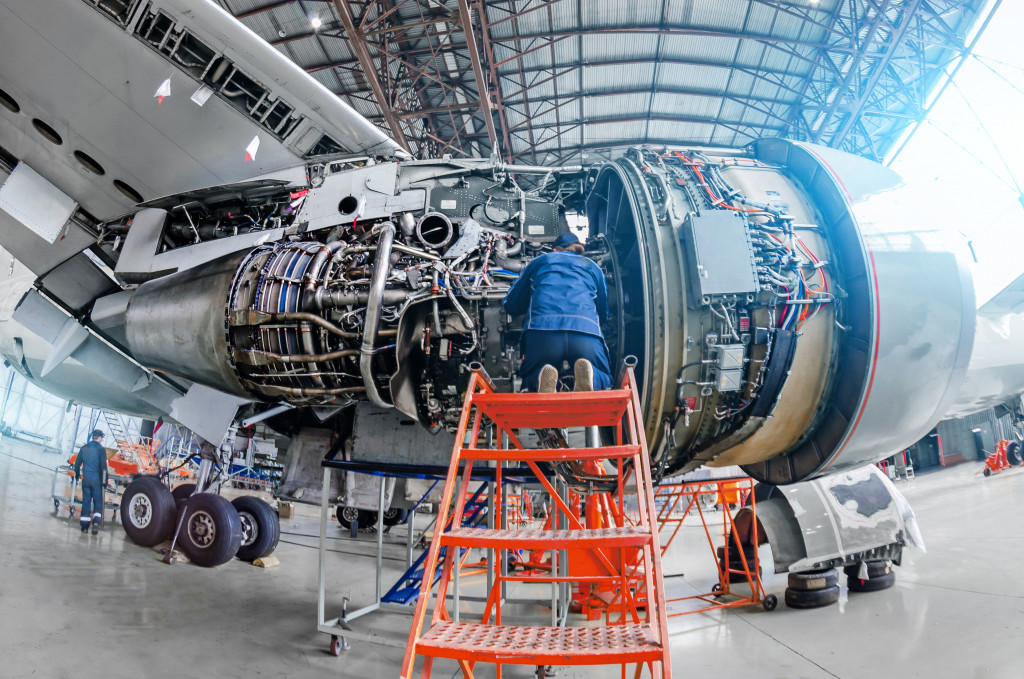As technology advances, so do the components that make up aircraft. While some aircraft parts remain virtually unchanged over time, other features have been drastically improved due to technological advances. Take a look at some of these parts and how they have evolved.
Engines
The engine is the most obvious example of an aircraft part that has seen significant improvements due to technology. The first engines were bulky and unreliable, but modern engines are much more efficient and powerful.
Thanks to advancements in materials science, engine components can now be made from lightweight yet composite materials. Carbon fiber and titanium are now extensively used in engine components. These are best for extreme temperatures and pressures.
Computer-aided design and 3D printing have also helped engine designers build components with much higher accuracy. This means that engines can now generate more power while being more reliable than ever.
Tires
Aircraft are heavy, and the tires need to withstand the immense weight. Therefore, durable plane tires are essential for a safe flight.
Modern airplane tires are made from specialized synthetic rubber compounds. These provide added strength and flexibility. Additionally, the steel cord used in the tire is much more robust and can withstand higher pressure levels. This ensures that aircraft tires will last longer and maintain performance even under heavy load conditions.
Furthermore, aircraft tires now come equipped with sensors that monitor tire pressure. They alert the pilot if it drops to unsafe levels so the tire can be replaced before it fails.
Avionics
Avionics is an electronic system that controls an aircraft’s navigation, communication, and other functions.
In the past, most systems were analog and relied on complex wiring networks. Nowadays, avionics systems are digital. This allows pilots to access information quickly and accurately without manually adjusting settings or flip switches. For instance, the cockpit displays can show real-time data on the weather and performance of aircraft components.
Moreover, integrated avionics systems allow for easier troubleshooting and maintenance. Pilots have access to detailed logs that can help pinpoint any issues. They also provide diagnostics data in case repairs are needed.

Flight Control Systems
The flight control system controls various aspects of an aircraft’s movement, such as roll, pitch, yaw, thrust levels, and airspeed.
These systems were mechanical or hydraulic in the past, but now they are primarily software-based. This allows for greater precision and accuracy when making adjustments during flight operations. They also provide better feedback to the pilot and will enable them to make more informed decisions.
Flight control systems are now integrated with other avionics systems, such as navigation and autopilot. This allows for smoother transitions between different flight parts and improved performance overall.
Airframe Structures
Airframe structures are responsible for providing structural support for an aircraft. These also support essential components such as wings, landing gear, and engines.
Traditional airframe structures were made from aluminum alloys which were solid but heavy. However, these limited their effectiveness in specific applications such as commercial aviation, where weight savings are critical for fuel efficiency gains. These days, they can be made from lighter materials that offer significant weight savings without sacrificing strength or durability.
Modern airframe structures are now able to absorb more energy in the event of an accident. This improves passenger safety and reduces the likelihood of catastrophic failure mid-flight.
Fuel Systems
Finally, fuel systems consist of tanks used to store fuel along with pumps. These are used to transport fuel throughout the plane during flight operations. Hence, the importance of this system for maintaining the aircraft’s overall performance.
These have come a long way from their early days and are much more reliable and efficient. They are now lighter due to advances in science and technology. Also, they are equipped with sensors that monitor fuel levels, temperature, and pressure. This provides valuable data for better decisions about flight operations.
Integrating this system is also much more accessible as most aircraft now have built-in fuel management systems. This makes it easier for pilots to monitor and plan their flights accordingly.
Technology has significantly impacted the aviation industry over the last few decades. From avionics systems that allow pilots greater control over their flights to airframes constructed from lighter yet more robust materials than ever before—technology has helped make aviation safer and more efficient. Also, from engines explicitly designed for optimum power output to advanced fuel management solutions—technology continues to revolutionize the aviation industry daily. By staying abreast of advancements in technology-related fields –aircraft owners can ensure they get the maximum performance out of their planes while keeping them safe at all times!

